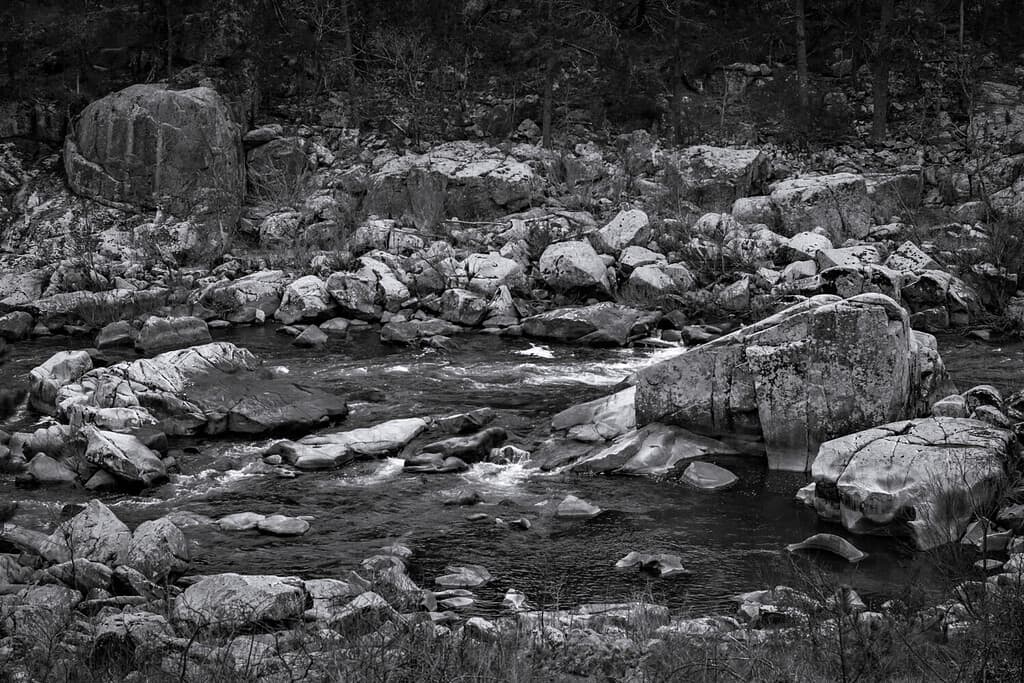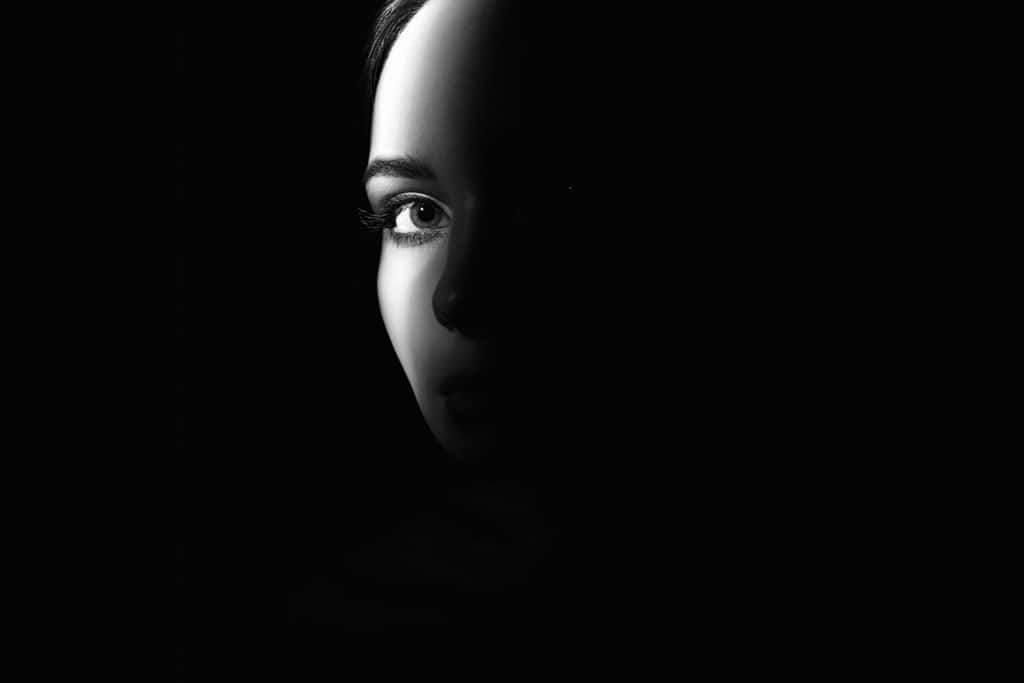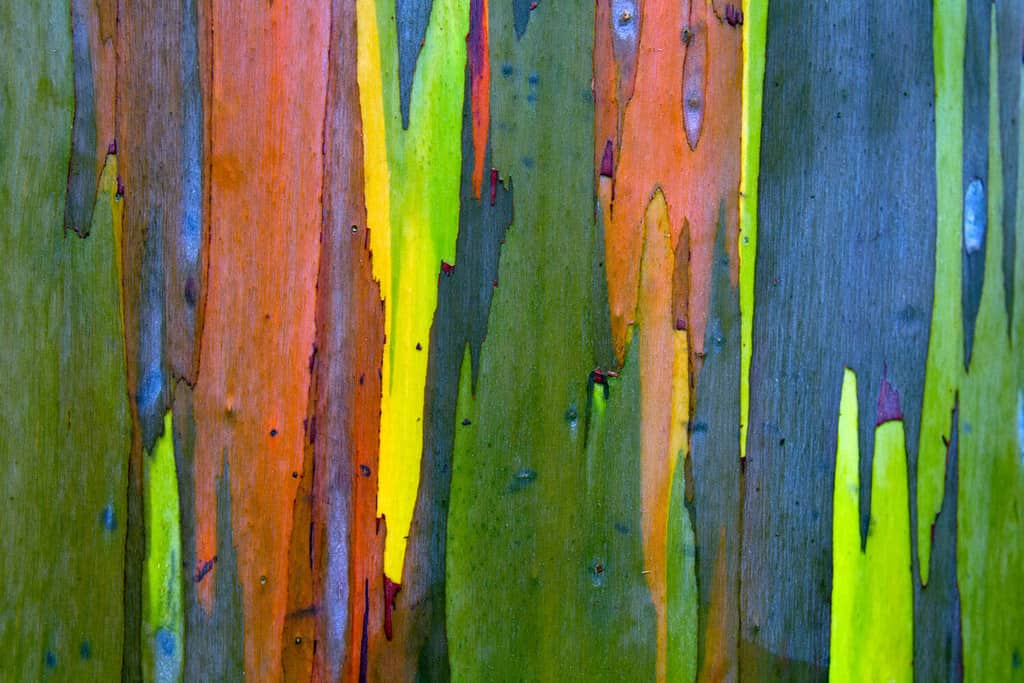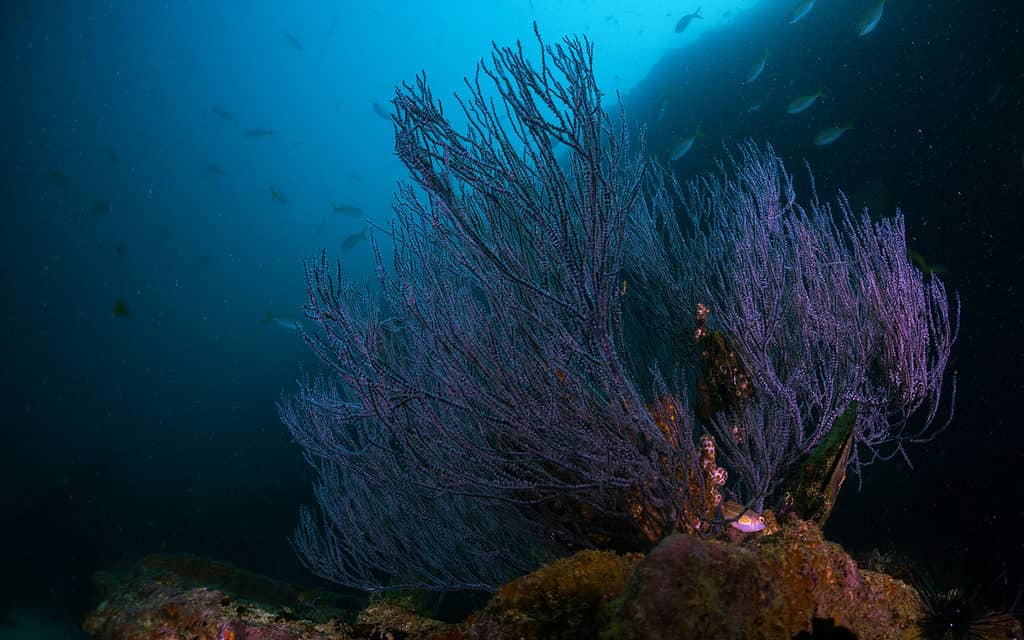While it may not be a comfortable feeling, there are many colors that represent sadness in our world. Sadness and feelings of grief are common in this life, but what colors truly represent this complex type of emotion? Where might you be able to find these colors in nature so that you can reflect and work through your own potential feelings of sadness?
Color symbolism and psychological theories surrounding pigments abound in our world. Today, we will go over some of the most common colors associated with sadness and grief. We will also tell you where in nature these colors can be found. That way, you can contemplate what they mean to you and your own symbolic journey. Let’s get started!
Which 3 Colors Represent Sadness?

Color theory states that cooler, deeper colors tend to make us feel contemplative, calm, or even a bit melancholy from time to time.
©iStock.com/kieferpix
There are three colors that typically represent sadness, according to color psychology and theories: deep shades of blue, black, and gray. Color theory states that cooler, deeper colors tend to make us feel contemplative, calm, or even a bit melancholy from time to time. This is especially true when we consider certain shades of indigo. Blue is a color closely connected to both peacefulness and sadness.
Let’s discuss these colors and their symbolism in more detail, as well as why they are often associated with sadness.
1. Gray

Despite its elegance, gray has a natural connection to depression, confusion, and sadness.
©Kyle Spradley Photography/Shutterstock.com
When it comes to colors that represent sadness, gray is as symbolic as it gets. While color theory and symbolism are highly subjective based on personal experience, a recent study suggests that gray is a color heavily associated with boredom and unfortunate weather. In fact, less than 10% of the participants in this same study responded positively to the color gray!
Gray is connected to innovation and technology as well as modern life. But it is a color that affects our moods deeply. Despite its elegance, gray has a natural connection to depression, confusion, and sadness.
2. Black

While black is often debated as an absence of light or color rather than a color itself, the symbolic associations of the color black still stand.
©Eugene Partyzan/Shutterstock.com
While the color black has had a bit of a modern renaissance in terms of its reputation, it is still a color that represents sadness. Emptiness and abandonment are two feelings readily associated with this color. These feelings or states of being align closely with sadness. While black is often debated as an absence of light or color rather than a color itself, the symbolic associations of the color black still stand.
3. Indigo

As hues deepen and purple begins to enter the equation, some shades of blue represent melancholy and regret.
©Kichigin/Shutterstock.com
Nearly all shades of blue have a close connection to sadness, but particularly deep shades such as indigo. Lighter shades of blue are often representative of calm and peaceful moments. However, as hues deepen and purple begins to enter the equation, some shades of blue represent melancholy and regret.
Indigo and other shades of blue are naturally associated with sadness. In fact, there’s even a colloquial turn of phrase regarding this color. If you’ve ever said that you’re feeling a little blue, you’ve helped contribute to this color’s reputation– at least when it comes to sadness!
Symbolism Behind the Colors That Represent Sadness

Viewing colors such as indigo, black, or gray may help you process feelings of sadness and grief, no matter the stage you find yourself in!
©A. Michael Brown/Shutterstock.com
We’ve often attributed feelings of sadness, solitude, and hopelessness to darker colors. Color theory and psychology both suggest that shades of gray, black, and indigo make us feel negative or cause distressing feelings. It could be the fact that these colors are shadowy or hidden in terms of their interpretations. Or it could be a reason found within our own personal experiences, subconscious and unquantifiable.
Feeling sad or down isn’t always a feeling we should push away. It is an important aspect of working through feelings of grief or trauma. Viewing colors such as indigo, black, or gray may help you process feelings of sadness and grief, no matter the stage you find yourself in!
Where to Find Colors Representing Sadness in Nature
Even colors that represent sadness can be found in nature, should we choose to look for them. Where can you see shades of black, indigo, or gray in our natural world? Here are some potential places to witness and experience these colors for yourself.
Gray: Overcast Days and Rocky Peaks Hold Sadness

A lack of sunshine can make us feel sad or hopeless, as overcast days block potentially healthy vitamins or chemicals from reaching us.
©R. Wellen Photography/Shutterstock.com
One of the best times to experience feelings of sadness in nature is during a gloomy, overcast day. If you look out the window and see clouds, you may notice feelings of sadness or depression arise. In fact, overcast days directly correlate to our health, particularly mental health fluctuations. A lack of sunshine can make us feel sad or hopeless. Overcast days block potentially healthy vitamins or chemicals from reaching us.
Spending some time in rocky areas may also bring about feelings of sadness. The cold and unfeeling surfaces of boulders represent apathy or sadness readily. If you are interested in exploring such feelings in nature, you may wish to hike in a rocky, stony location. Hiking to the cold, rocky peak of a mountaintop may also give you plenty of time for deep contemplation!
Black: The Night Sky May Bring Feelings of Sadness

Taking some melancholy moments in the night air may help you work through feelings of sadness and depression.
©Andrei Baskevich/Shutterstock.com
Few things are as contemplative as the night sky, empty and unfathomable in its existence. There are many deep and dark things found in nature if you are interested in experiencing the color black for itself. Taking some melancholy moments in the night air may help you work through feelings of sadness and depression. The opposite of day, nighttime and the exploration of it naturally represent hopelessness and secrets, feelings that may readily accompany sadness.
Likewise, exploring caves or other places lacking in sunlight may also help you process feelings like sadness. The dark and the color black can help us focus, lending to deeper contemplation and thoughts surrounding how we truly feel!
Indigo: Sadness is Hidden in Deep Waters

If you are hoping to process your feelings of sadness in nature, seeking out deep, dark waters may help you in this endeavor.
©Bangtalay/Shutterstock.com
Sadness and the unknown are closely linked to one another. When we consider the color blue in relation to feelings of the unknowable, depth is an important aspect of this. If you are hoping to process your feelings of sadness in nature, seeking out deep, dark waters may help you in this endeavor. Indigo is a difficult color to find in nature given its dark pigment and unique variation in its shades. However, deep lakes and rivers may best capture indigo in a natural environment.
Likewise, you may find that spending some time in a glacial setting amplifies your feelings of sadness. While glaciers are rarely found in deep shades of indigo, the cold and unfeeling blue colors that accompany these fascinating structures may promote sadness in us. Typically, the darker the shade of blue, the more likely you are to feel sad when viewing it. But there’s just something about the cold and depressing shades of blue found within glacial structures!
Nature May Help Heal Sadness

You may want to process your feelings in nature as the natural world helps heal us.
©Marco Casavecchia/Shutterstock.com
While seeking out certain natural colors that best represent sadness may not feel particularly helpful, it’s important to consider them. Processing feelings of sadness or uncertainty is an important part of life. You may want to process your feelings in nature as the natural world helps heal us, no matter what state we’re in!
Summary of Colors That Represent Sadness
| Colors | Where to See Them in Nature |
|---|---|
| Gray | On cloudy days, rocky regions, mountaintops |
| Black | Night sky viewing, deep caves |
| Indigo | Deep lakes, rivers, or oceans, glacial settings |
The photo featured at the top of this post is © Eugene Partyzan/Shutterstock.com
Thank you for reading! Have some feedback for us? Contact the AZ Animals editorial team.







